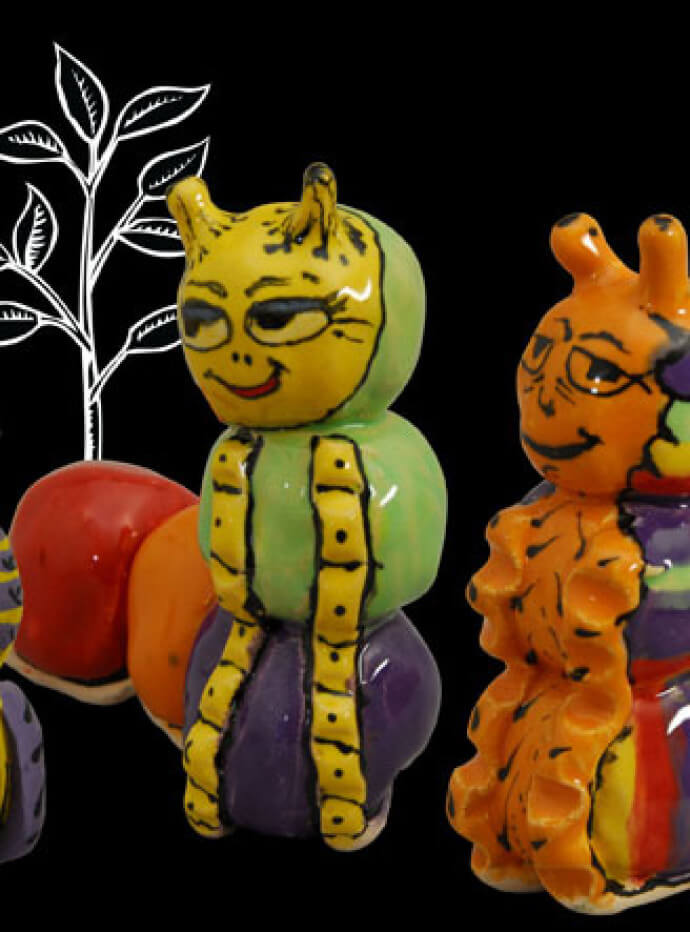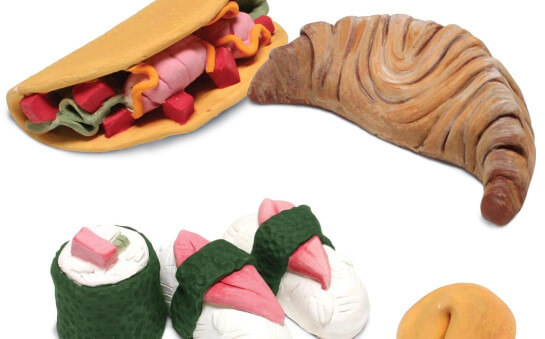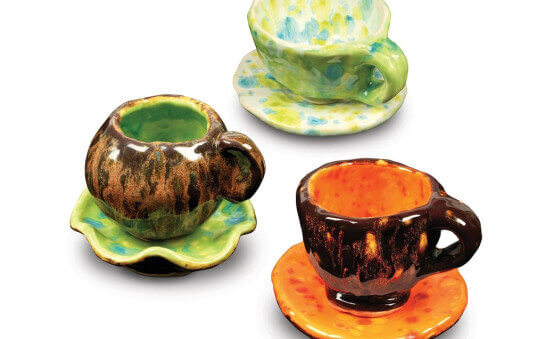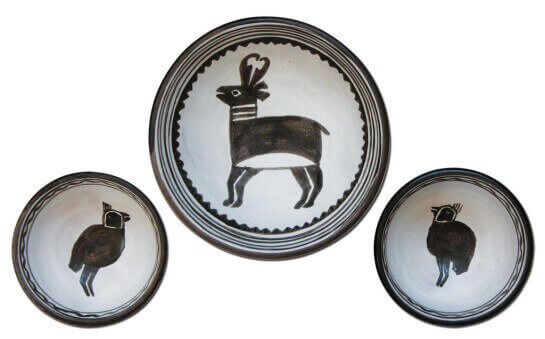Colorful Caterpillars

Caterpillars come in all shapes, sizes and colors. For this lesson plan, study real caterpillars from your backyard or images of caterpillars in books, photos or online. Students create pinch pots and attach them to form the caterpillar’s body. In one 40 to 50 minute class period, each critter is constructed and painted with underglaze, slow dried, and fired--turning into a completed colorful caterpillar. Once caterpillars are slow dried and bisque fired, add more class periods to decorate with other kinds of low fire glazes.
Supplies List
- White Art Clay Moist
- Double-Ended Clay Shaper
- Wire Clay Cutter
- Scoring Tool
- Glaze Brushes
- Teacher's Palette Low Fire Glazes
- Liquid Underglazes
- Velvet Underglazes

Roll balls
Roll five 2" balls of clay to make pinch pots.
Make pinch pots
To make small pinch pots, push thumb through two-thirds of the way and pinch rotating as you go. Remember that each caterpillar body part is a small round ball shape.
Make pinch pot nearly closed
Squeeze opening to make the pinch pot into rounded ball shape.
Smooth
Wooden skewers work well for smoothing and scoring.
Repeat
Repeat until you have five rounded, ball-shaped, pinch pots.
Connect Caterpillar parts
Put the caterpillar parts together by scoring (roughen connecting parts with a scoring tool or a wooden skewer) and moisten the scored area only with vinegar.
Connect 3 in a row
Attach by pressing together. Attach three pinch pots side by side.
Smooth joins
Smooth around connected areas with Clay Shaper tool.
Make caterpillar feet
Roll out two coils, 1/4" to 3/8" wide and 5" to 7" long for caterpillar feet. The coils attach parallel along the bottom three pinch pots and up onto the 4th.
Attach Caterpillar Feet
Attach coils to underside of caterpillar by scoring, and brush only the scored area with vinegar. The coils provide a sturdy base.
Smooth feet
Press coils on and smooth connected areas with Clay Shaper tool or finger.
Make holes to connect head
To prevent cracking during the drying and firing process, make a hole in the top of a pinch pot on an end, and make a hole on the top of one of the other remaining pinch pots.
Connect upper body and head
Score pinch pots, caterpillar parts, in connecting areas, paint on vinegar and attach.
Antennae
Form antennae out of short coils, score, and brush with vinegar and attach.
Firing
Slow dry and then bisque fire all the caterpillars to Cone 04. Paint Low Fire glazes on and then glaze fire to Cone 05. The caterpillar examples for this lesson plan are AMACO’s Teacher’s Choice and Teacher’s Palette low fire glazes fired to Cone 05. AMACO’s Velvet Underglazes were also used with and without a clear glaze (AMACO’s LG-10 Clear Transparent) painted on and fired also to Cone 05. There are many additional low fire glazes. Experiment and explore for really Colorful Caterpillars.
Decorate the caterpillar
Paint on brightly colored underglazes. Using a wooden skewer, scratch through underglaze to decorate. This texturizing, decorating technique is called sgrafitto. There are a great number of decorating possibilities for these caterpillars in addition to the underglaze technique. Studying real caterpillars, in your backyard, and photos of different kinds of caterpillars gives ideas for decorating. Imagination is an excellent tool for decorating, too.
Tips for success
The goal for each pinch pot is for the walls of each pot to be the same thickness everywhere—approximately 1/4 to 3/8 inches. Share vinegar, one small container (yogurt cup size) for 5-6 students. Use small brushes to apply vinegar—one per student—and encourage students to moisten instead of soak when scoring with vinegar. Build the caterpillar on some newspaper or piece of cardboard. 8" by 10" inches for the cardboard or enough layers of newspaper to carry finished project. Set up an underglaze station on one table and send 4 to 5 students at a time to paint underglaze. Do this as caterpillars get finished and during the last part of the class. Slow dry completed caterpillars (whether painted with underglaze or not) by covering loosely with plastic, gently draped, for the first 24 hours.





